The Woman's Christian Temperance Union (WCTU) is an international temperance organization. It was among the first organizations of women devoted to social reform with a program that "linked the religious and the secular through concerted and far-reaching reform strategies based on applied Christianity." It plays an influential role in the temperance movement. Originating among women in the United States Prohibition movement, the organization supported the 18th Amendment and was also influential in social reform issues that came to prominence in the progressive era.

Anna Maria Katarina "Kata" Dalström, née Carlberg, was a Swedish socialist and writer. She belonged to the leading socialist agitators and leftist writers in contemporary Sweden, and has been referred to as "the mother of the Swedish socialist working class movement".
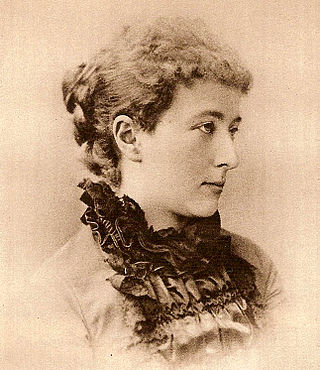
Anna Matilda Charlotta Branting, was a Swedish journalist and writer. She was a Social Democrat and married to Swedish prime minister Hjalmar Branting. From the 1880s to 1917, she was an influential theater critic in the Stockholm press under the pseudonym Réne.
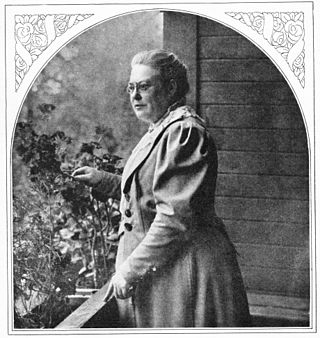
Anna Whitlock was a Swedish reform pedagogue, journalist, suffragette and feminist. She was co-founder and twice chairperson of the National Association for Women's Suffrage. She was also the co-founder of the women's cooperative food association Kvinnornas Andelsförening Svenska Hem.

Lydia Katarina Wahlström was a Swedish historian, author and feminist. She was one of the founders of the National Association for Women's Suffrage and its chairman in 1909–1911.
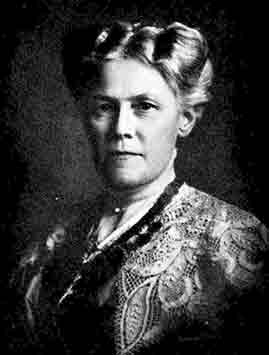
Anna Margareta "Ann-Margret" Holmgren,, was a Swedish author, feminist, suffragist, and pacifist.

Anna Fredrika "Frigga" Carlberg, née Anna Fredrika Lundgren, was a Swedish writer, social worker, feminist and advocate for women's suffrage. She was a member of the central committee of the National Association for Women's Suffrage from 1903 to 1921 and chair of the Gothenburg branch of the Swedish Society for Woman Suffrage from 1902 to 1921.

Anna Jakobina Johanna Lindhagen was a Swedish politician, social reformer and women's rights activist. In collaboration with Anna Åbergsson, she was a leading force in the introduction of allotment in Sweden. She was one of the driving forces behind the foundation of the National Association for Women's Suffrage. Lindhagen was a member of the Stockholm City Council in 1911–1923.

Gulli Charlotta Petrini was a Swedish Physicist, writer, suffragette, women's rights activist and politician. She was the chairperson of the local branch of the National Association for Women's Suffrage in Växjö 1903–1914 and Stockholm 1914–1921, and sat in the city council for the liberals in Växjö in 1910–1914.
Ruth Valborg Maria Gustafson née Pettersson, was a Swedish politician, union worker, women's rights activist and editor. She was a member of the Stockholm city council from 1919 to 1938, a member of the second chamber of parliament from 1933 to 1960, and editor of the social democratic paper Morgonbris from 1908 to 1910 and 1919 to 1921. She was a member of the National Association for Women's Suffrage from 1902 to 1921, and a speaker of the left wing within the movement.

Events from the year 1888 in Sweden

Anna Johansson-Visborg was a Swedish trade union leader, women's rights activist and politician with the Swedish Social Democratic Party.

Sigrid Gustafsdotter Banér, was a Swedish noble, letter writer and Scholarship founder. She is most known in history for the letters to her sister Anna, in which she describe the last days of her father Gustaf Banér, who was executed during the Linköping Bloodbath.

Anna Sofia Kleman (1862–1940) was a Swedish insurance officer and feminist. She is remembered for her work as a women's rights activist and pacifist, especially in regard to voting rights. She participated in the 1911 Stockholm Women's Suffrage Conference and represented Sweden at the 1915 International Women's Peace Conference in the Hague.
Augusta Eleonora "Elin" Engström (1860–1957) was a Swedish politician and trade unionist. She belonged to the pioneers of the labour movement, the Social Democratic movement, as well as the trade unionism and women's rights movement within the Social Democratic labour movement in Sweden.
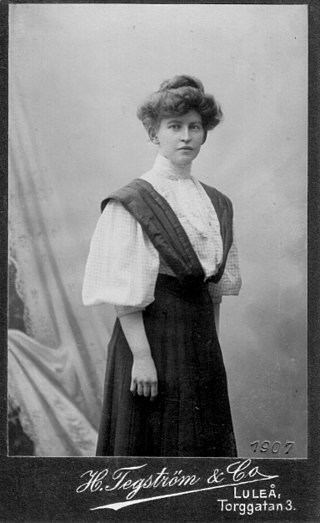
Märta Johanna Bucht (1882–1962) was a Swedish schoolteacher, suffragist and peace activist. From 1908, she chaired the Luleå branch of the Swedish Association for Women's Suffrage (FKPR). She was also active in the peace movement. In 1919, she was one of the 12 Swedes who attended the Zurich conference where the Women's International League for Peace and Freedom was established. Throughout her life, Bucht supported the temperance movement, becoming a member of the IOGT-NTO.

Sigrid Maria Kruse was a Swedish educator, children's writer and suffragist. In addition to her teaching activities in Karlskrona, she strongly supported the suffrage movement, contributing articles to magazines, publishing brochures and speaking at meetings. In 1904, she established a local suffrage association and took part in the important Stockholm meeting on suffrage in 1909. From 1912 to 1926, she represented the Liberal People's Party in Karlskrona.

Elsa Anna Maria Alkman née Ahlström was a Swedish women's rights activist, suffragist and writer. While living in Eslöv, she became an active member of the local branch of the National Association for Women's Suffrage (LKPR), lecturing, writing and organizing events. In 1916, she wrote a report on how Danish women had voted in a referendum after obtaining the right to vote. She continued to contribute to the extension of women's rights in the 1920s after Swedish women had achieved voting rights. In the 1930s, she and her husband settled in Norrköping where she played the violin and composed music for local concerts.
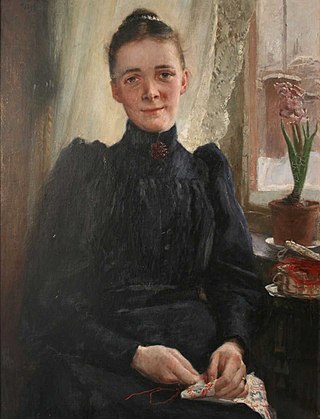
Nina Amanda Constantia Benner-Anderson née Åhlande (1865–1947) was a Swedish nurse, women's rights activist, suffragist, pacifist and politician. In 1906, She founded the Västerås branch of the National Association for Women's Suffrage in 1909, becoming a board member in 1909. In 1912, she was the first woman to be elected to the Västerås City Council. Benner-Anderson was one of the Swedish delegates at the 1915 Women's Peace Conference in the Hague and continued to support the cause for peace in the 1920s and 1930s. She was also politically active in the Free-minded National Association and a member for a time of the Liberal Women's Association.

Karolina Kristina Själander (1841–1925) was a Swedish headmistress, women's rights activist, suffragist and politician. A strong supporter of school education for girls, she was headmistress of the Elsa Borg Girls' School in Gävle from 1870 to 1915. As a result of its increasing popularity, in 1878 she funded the construction of a larger building for the school, later known as the Själander School. In 1903, she founded and chaired the Gävle branch of the National Association for Women's Suffrage (LKPR) and in 1910 was elected to the Gävle City Council.

















